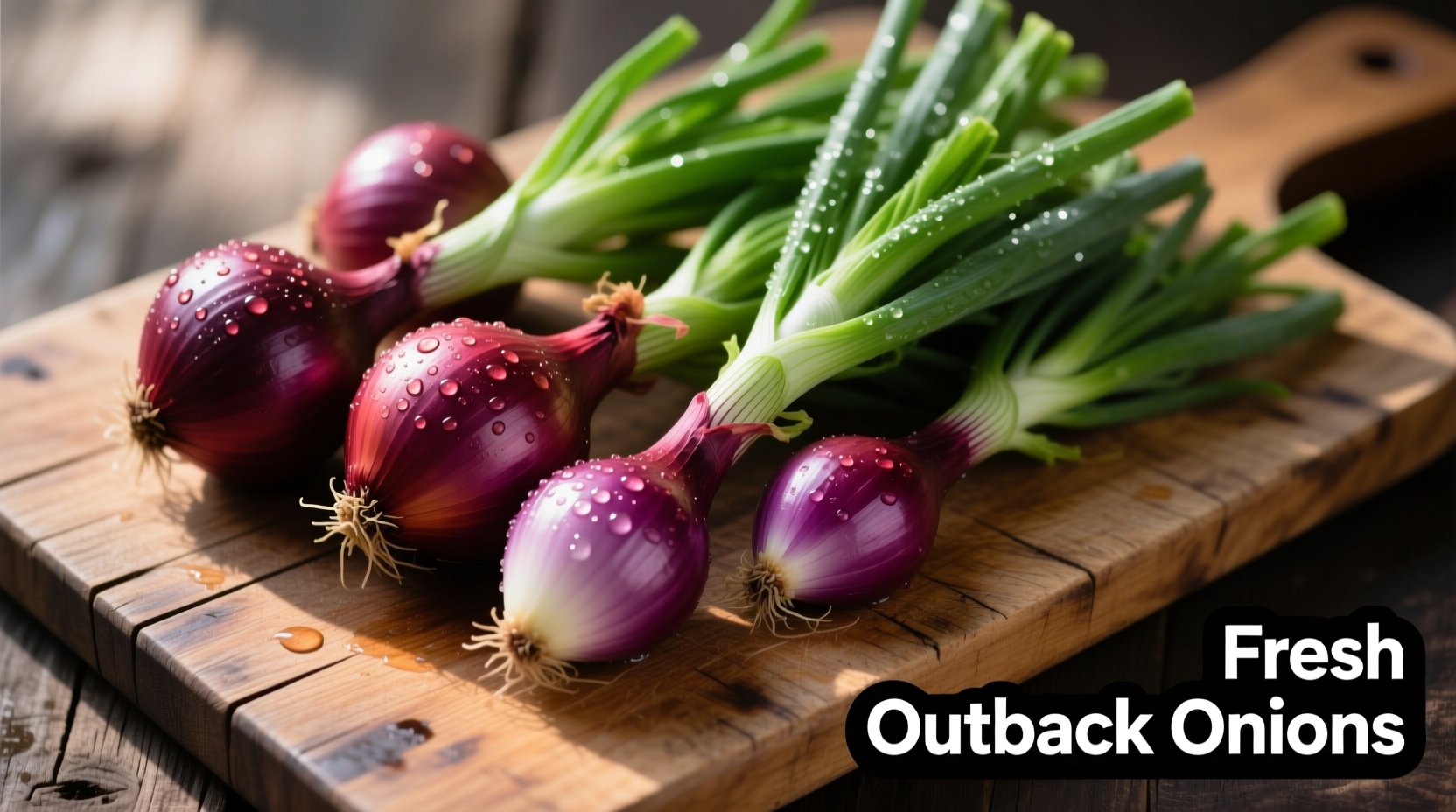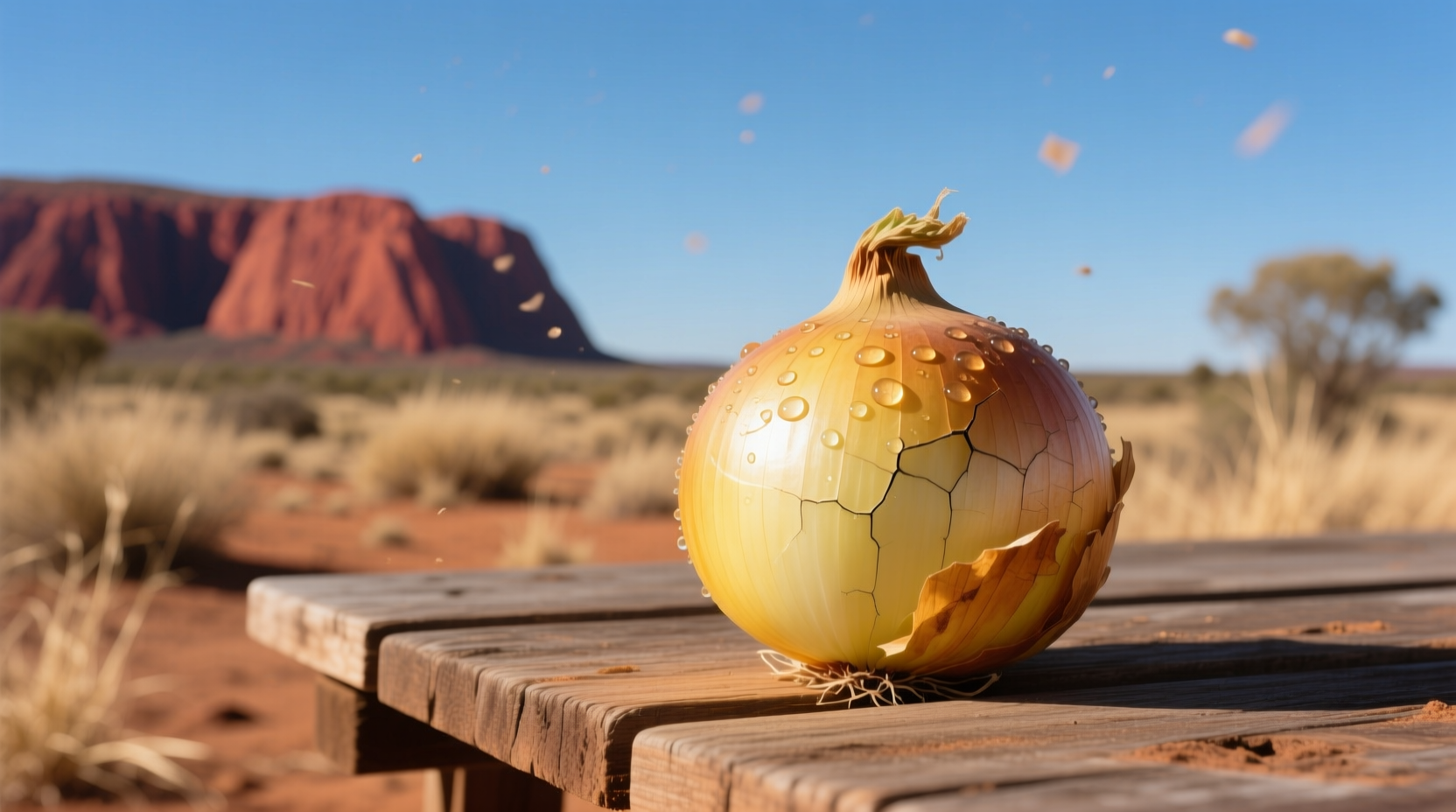When you're searching for the perfect onion to elevate your dishes without overwhelming heat, the outback onion delivers a culinary experience that bridges the gap between sweet Vidalia varieties and traditional storage onions. This distinctive Australian-developed variety offers home cooks and professional chefs alike a versatile ingredient that maintains its integrity through cooking while providing subtle sweetness that enhances rather than dominates your recipes.
What Exactly Is an Outback Onion?
Despite its evocative name suggesting native Australian origins, the outback onion is actually a cultivated sweet onion variety specifically bred for Australian agricultural conditions. Developed through selective breeding programs by Australian horticultural researchers, this onion belongs to the Allium cepa species but features distinct characteristics that set it apart from conventional onion varieties.
Unlike the intense heat of standard yellow onions or the delicate nature of Vidalia onions which require specific Georgia terroir, outback onions thrive in Australia's diverse climate conditions while maintaining consistent flavor profiles throughout the growing season. Their development represents a significant achievement in adapting onion cultivation to challenging environments while preserving desirable culinary qualities.
| Onion Variety | Pyruvate Level (Heat Indicator) | Storage Life | Best Culinary Uses |
|---|---|---|---|
| Outback Onion | 3.2-4.1 μmol/g | 4-6 months | Raw applications, caramelizing, roasting |
| Yellow Storage Onion | 8.5-10.2 μmol/g | 5-8 months | Cooking, soups, stews |
| Vidalia Sweet Onion | 3.1-3.8 μmol/g | 1-2 months | Raw applications, salads |
| Red Onion | 5.7-7.3 μmol/g | 2-3 months | Salads, pickling, garnishes |
This comparison table, based on data from the Australian Department of Agriculture, reveals why outback onions have gained popularity among culinary professionals. Their moderate pyruvate levels indicate lower pungency than standard yellow onions while offering significantly better storage capabilities than most sweet onion varieties.
Distinctive Characteristics That Set Outback Onions Apart
What makes outback onions truly special isn't just their mild flavor profile but their remarkable consistency. Unlike many sweet onion varieties that can vary dramatically in sweetness depending on growing conditions, outback onions maintain reliable characteristics thanks to their selective breeding for Australian environments.
When selecting outback onions at your local market, look for firm bulbs with dry, papery skins that feel heavy for their size. The ideal outback onion should have a slightly flattened shape compared to the perfectly round standard yellow onions, with golden-brown skin that peels away cleanly to reveal crisp, white layers beneath.
Practical Culinary Applications for Home Cooks
Understanding how to leverage outback onions' unique properties can transform your everyday cooking. Their balanced sweetness and mild heat make them exceptionally versatile across cooking methods:
- Raw applications: Slice paper-thin for salads, sandwiches, or as a burger topping without causing excessive tearing or overwhelming other ingredients
- Caramelizing: Their natural sugar content promotes beautiful browning in just 25-30 minutes (5-10 minutes faster than standard yellow onions)
- Roasting: Maintain structural integrity better than Vidalias when roasted whole or in large chunks
- Pickling: Absorb flavors beautifully while retaining a pleasant crunch
Professional chefs particularly appreciate outback onions for their "forgiving" nature in recipes. Unlike more delicate sweet onions that can become mushy when cooked, outback onions hold their texture through extended cooking times while still delivering that desirable mild sweetness.

When Outback Onions Shine (and When They Don't)
While versatile, outback onions excel in specific culinary contexts while being less suitable for others. Understanding these context boundaries helps you make better ingredient choices:
Ideal applications:
- Any dish where you want onion flavor without intense heat
- Recipes requiring long cooking times where standard sweet onions would break down
- Raw preparations where milder onion flavor is preferred
- Dishes where consistent flavor matters (commercial food production)
Less suitable applications:
- Recipes specifically requiring the sharp bite of yellow onions (certain Mexican salsas)
- Situations where maximum storage longevity is critical (standard yellow onions last slightly longer)
- Traditional French onion soup (where the sharper flavor of yellow onions caramelizes differently)
Storage and Selection Tips for Maximum Freshness
Proper storage significantly extends the shelf life of outback onions. Unlike many sweet onion varieties that deteriorate quickly, outback onions maintain quality for 4-6 months when stored correctly:
- Store in a cool, dark, well-ventilated space (ideal temperature: 45-55°F/7-13°C)
- Keep away from potatoes which emit ethylene gas that accelerates spoilage
- Do not refrigerate whole bulbs (refrigeration promotes mold in high-moisture onions)
- Once cut, store in an airtight container in the refrigerator for up to 7 days
When selecting outback onions, avoid any with soft spots, mold, or sprouting. The neck should be fully dry and closed - an open neck indicates the onion is beginning to deteriorate. Unlike standard yellow onions which can feel slightly soft when nearing spoilage, outback onions maintain firmness longer but develop a slightly slimy texture when past their prime.
Growing Outback Onions at Home
For home gardeners interested in cultivating this unique variety, outback onions adapt well to various growing conditions. According to the Western Australian Department of Primary Industries and Regional Development, these onions perform particularly well in sandy loam soils with good drainage.
Planting typically occurs in late winter to early spring in most Australian climates, with bulbs ready for harvest 90-110 days after planting. The key to successful cultivation is ensuring consistent moisture during bulb development while reducing water as harvest approaches to promote proper curing. Unlike many sweet onion varieties that require specific day-length conditions, outback onions have been bred for day-length neutrality, making them suitable for cultivation across diverse Australian regions.
Nutritional Profile and Health Benefits
Nutritionally, outback onions offer similar benefits to other onion varieties but with some distinctive advantages. Research from the Australian Institute of Food Science and Technology shows they contain slightly higher levels of quercetin, a powerful antioxidant, compared to standard yellow onions.
A medium outback onion (approximately 148g) provides:
- 44 calories
- 10g carbohydrates
- 2g dietary fiber
- 110% of daily vitamin C needs
- Significant amounts of B vitamins and potassium
Their lower sulfur compound content compared to standard onions makes them more digestible for many people who typically experience discomfort with regular onions, while still delivering the cardiovascular and anti-inflammatory benefits associated with allium vegetables.
Where to Find Authentic Outback Onions
While originally developed in Australia, outback onions have gained international recognition and are now available in specialty markets worldwide. In Australia, look for them at major supermarkets from late spring through early winter. Internationally, they're most commonly found in high-end grocery stores and specialty produce markets, typically labeled as "Australian sweet onions" or by specific brand names like "Outback Sweet" or "Aussie Sweetie."
Be cautious of imitations - true outback onions should have a distinctive flattened shape and consistently mild flavor. If you're unsure, ask your produce manager about the specific variety and origin. Many farmers' markets now feature locally grown versions of this Australian-developed variety, particularly in regions with similar Mediterranean climates.











 浙公网安备
33010002000092号
浙公网安备
33010002000092号 浙B2-20120091-4
浙B2-20120091-4